Revisiting the Western Ghats - A Monsoon Adventure
First published in Sanctuary Asia,
Vol. 43
No. 12,
December 2023
Text and Photographs By Saurabh Sawant
Monsoon herping in the Western Ghats holds a special place in my heart. However, the last few years have seen me venturing elsewhere owing to COVID-19 restrictions and various commitments, leaving me longing for those verdant landscapes. What added to this year’s anticipation was the loss of an incredible image collection to a sudden hard drive crash. I was determined to recreate those lost moments, and finally, this season, everything seemed to fall into place, many times over!
It all began with an impromptu road trip to the Ghats when our initial plan for herping in the Thar Desert had to be cancelled. Field biologists and close friends Shashank Dalvi and Vishnupriya Sankararaman, and I set off from Bengaluru, making our way straight to Wayanad, where our dear friend David Raju manages an incredible wildlife lodge, CGH Earth.
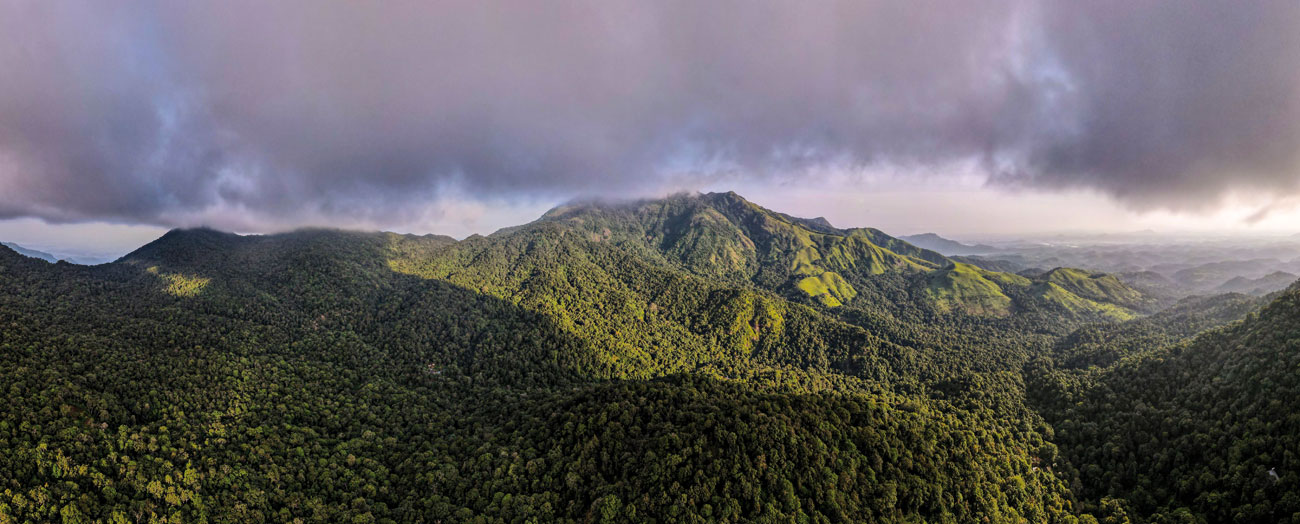
A Biodiversity Haven: The majestic Wayanad, with its rolling hills and montane rainforests, forms a sanctuary for a diverse array of life. Within this exquisite mosaic of shola grasslands and dense woodlands resides the endangered Banasura Chilappan, among many other endemic and rare species. Yet, the serenity of the Western Ghats is under siege. Encroachments, habitat destruction, and the relentless march of climate change loom large, casting shadows over the future of this fragile ecosystem. As we contemplated the beauty of Chembra Peak, we were reminded of our shared responsibility to safeguard these landscapes for generations to come.
This year, the Ghats experienced unusual weather patterns, with erratic rainfall and a high deficit in many areas. The impact of erratic weather, most likely caused by climate change, on the monsoon-dependent fauna was already palpable, and will likely become even more evident in the coming years. Nonetheless, at David’s property, we had some exciting encounters, including of the Ochlandrae reed frog, large-scaled forest lizard, Anil’s bush frog, hump-nosed pit viper, and the incredibly cryptic Kalpetta yellow bush frog, blending seamlessly into patches of moss and lichen. After bidding adieu to David’s family and team, we set our sights on a mega rarity: the Banasura Chilappan. This highly endemic species had eluded us for years and was only reported from a handful of spots by birders. Also called the Banasura Laughingthrush, one of the least-known bird species in peninsular India, this species calls the Sky Islands (sholas) of subtropical montane forests its home. They are scattered among grasslands and rocky outcrops, found exclusively above 1,400 m. elevation. With meticulous planning and relentless effort, we triumphed, adding this enigmatic bird to our list, alongside some remarkable frogs and caecilians, even spotting a Malabar spiny dormouse.
Our journey continued as we ventured into the Nilgiris, visiting naturalist friends along the way. While we began with encounters with the cross-backed bush frog and the lizard Nilgiri salea, our primary target was the elusive horseshoe pit viper. It demanded perseverance, but eventually rewarded us with a stunning sighting. A magical evening brought us fantastic views of a leopard family, marking a memorable conclusion to this leg of our adventure.
In the following week, my wife Nikita and I embarked on a family trip to Munnar. Despite a busy schedule, I managed to sneak in some time for herping with Hadlee, a dear friend and naturalist. Together, we aimed to recreate images of some of the beautiful species of frogs and snakes in the Ghats. Our efforts paid off with sightings of Uthaman’s bush frog, Munnar bush frog, a large-scaled pit viper, and many other fascinating species. Topping our wishlist was the critically endangered resplendent shrubfrog, and our pursuit led to an encounter with the endemic Nilgiri tahr saddleback (as the males of the species are called, owing to the light grey patch on their backs), along with elephants and a plethora of other herps and birds. Our splendid journey ended on a note as thrilling as it had begun. Here’s a curated series of photos that will take you along on this incredible adventure.
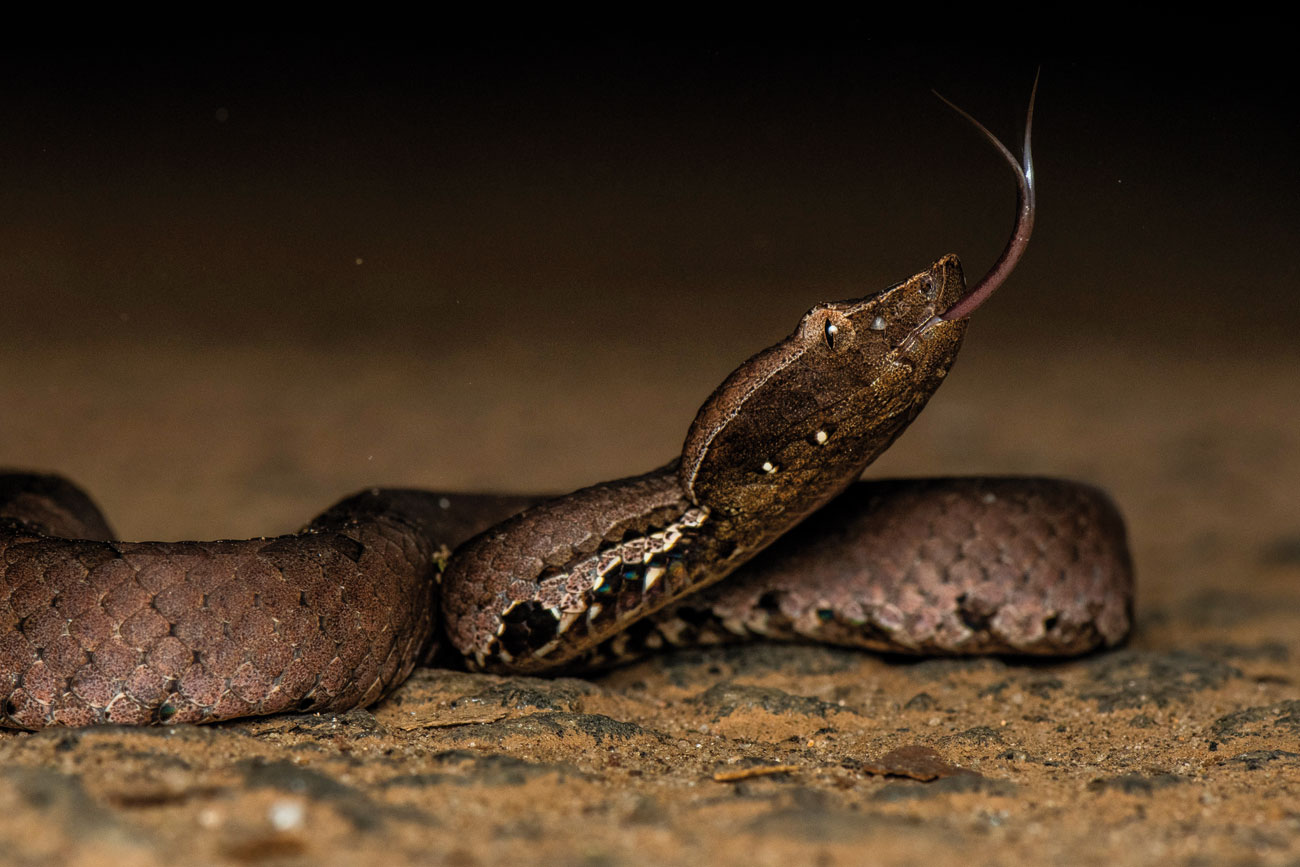
Hump-nosed viper Hypnale hypnale: Encountering this hump-nosed viper beside a tranquil stream in Wayanad was a treat. Endemic to south India and Sri Lanka, this venomous snake is primarily nocturnal, seeking refuge in leaf litter, logs, or beneath rocks during the day. Its cryptic colouration allows it to blend seamlessly into this landscape.
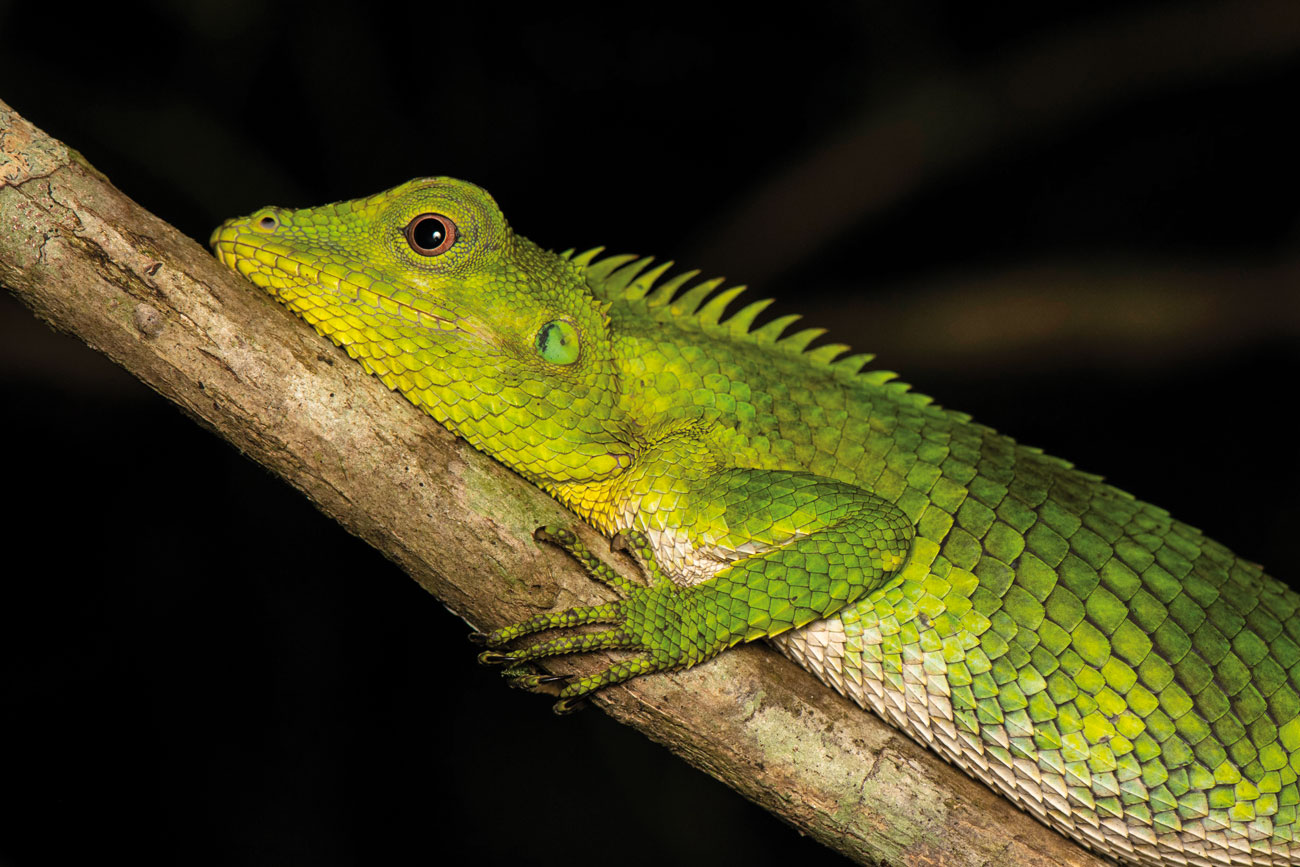
Nilgiri forest lizard Calotes nemoricola: An agile, tree-dwelling, and daylight-active agamid lizard, it is found mainly in the southern Western Ghats. This species thrives amidst the dense foliage, feeding on insects. When spotted resting on a twig, its prominent scales and spines along the back evoke in my mind images of a mythical dragon.
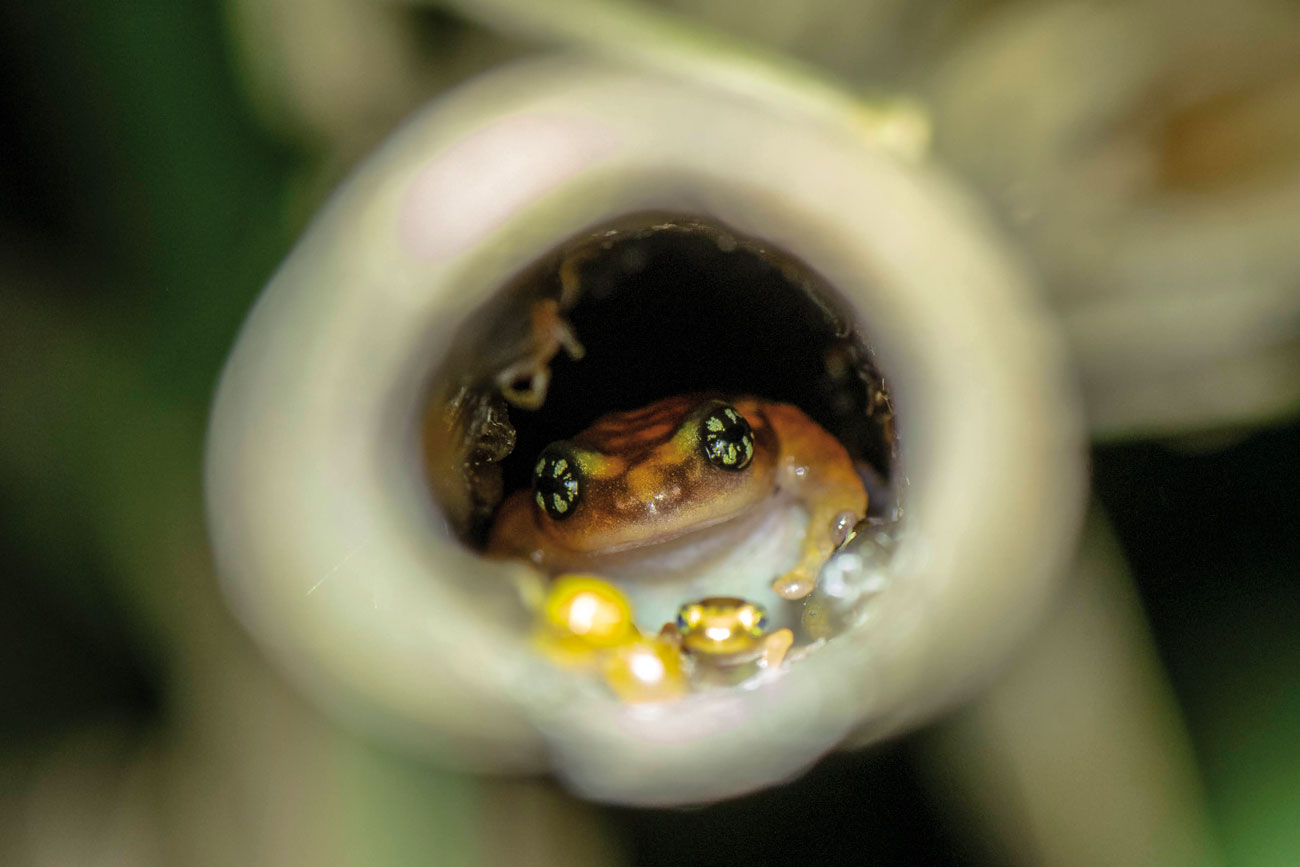
Ochlandrae shrub frog Raorchestes ochlandrae: While most frog species are not known for elaborate parental care behaviours, this Ochlandra frog, named after the Ochlandra reeds, defies this trend by nesting within reed hollows to protect eggs and hatchlings. The duo appeared to be using the same reed hollow for multiple egg-laying sessions throughout the season.
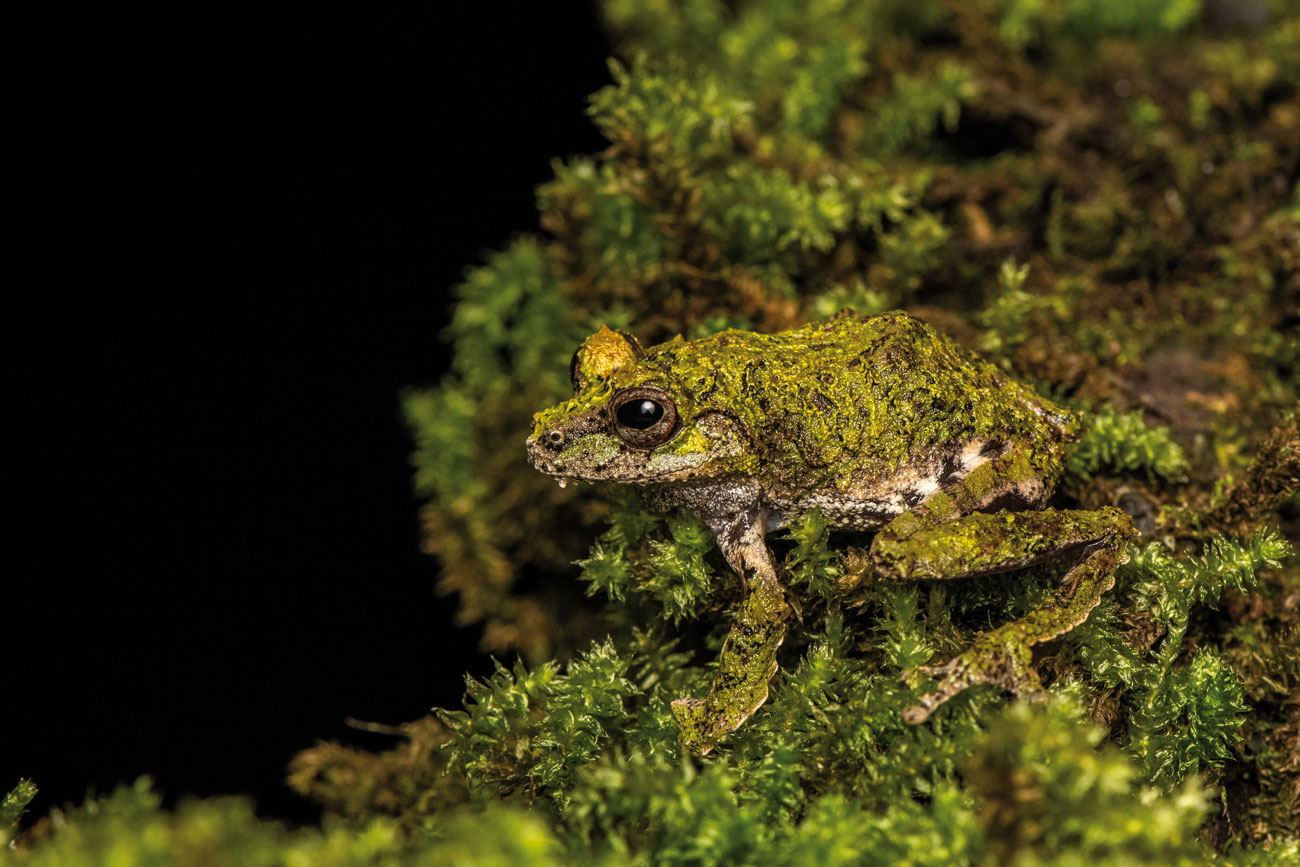
Kalpetta yellow bush frog Raorchestes nerostagona: The enigmatic, endangered Kalpetta yellow bush frog is a species shrouded in mystery. Its cryptic nature is a testament to its survival strategy as it resides high in the canopy of towering trees. Often, its presence is announced by a call that resembles an echoing water droplet, a sound that carries through the forest, while it remains unseen. This elusive frog possesses stunning camouflage, seamlessly blending into moss and lichen-laden tree barks. Its various colour forms enhance its capacity to disappear within the vibrant tapestry of the forest, requiring a keen naturalist’s eye to spot this rare gem.
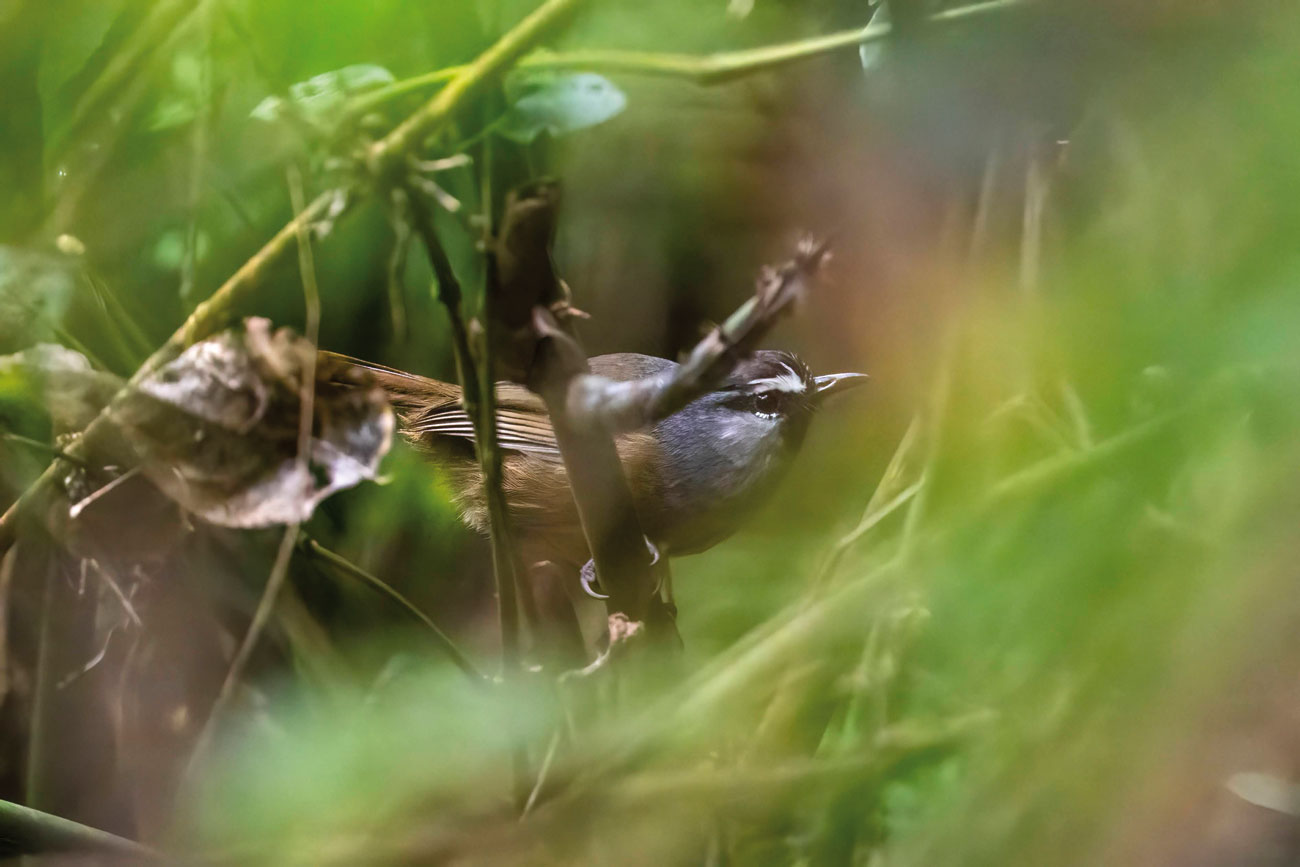
Banasura Laughingthrush/Banasura Chilappan Montecincla jerdoni: Among the least-known bird species in peninsular India, the Banasura Laughingthrush, or Banasura Chilappan, occupies a small niche in the southwestern region. This bird, a member of the Montecincla genus endemic to the Western Ghats mountains, is limited to the Sky Islands (sholas) above 1,400 m. elevation, interspersed among grasslands and rocky outcrops. With a population decline and habitat loss outside of Protected Areas, it’s now classified as endangered. Urgent research is needed to comprehend its life history and the threats it faces in these Western Ghats Sky Islands.
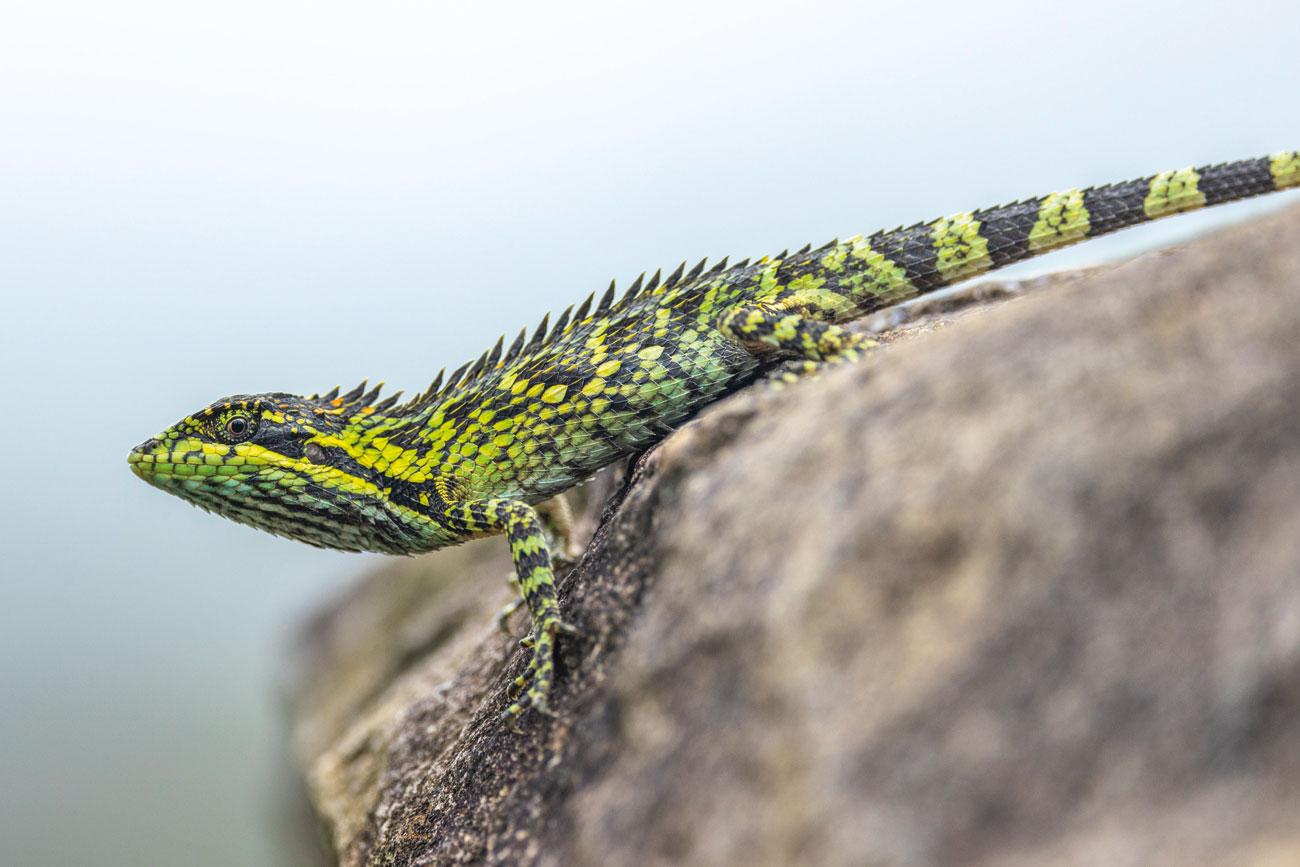
Horsfield’s spiny lizard Salea horsfieldii: Affectionately called the Nilgiri salea, this remarkable species is a member of the Agamidae family and calls the Nilgiri Hills its home. Endemic to this region, it thrives primarily in the high-altitude grassy hills, offering a unique contribution to the biodiversity of these enchanting landscapes. Its close relative Salea anamallayana inhabits the grassy hills of the Anamalai Hills.
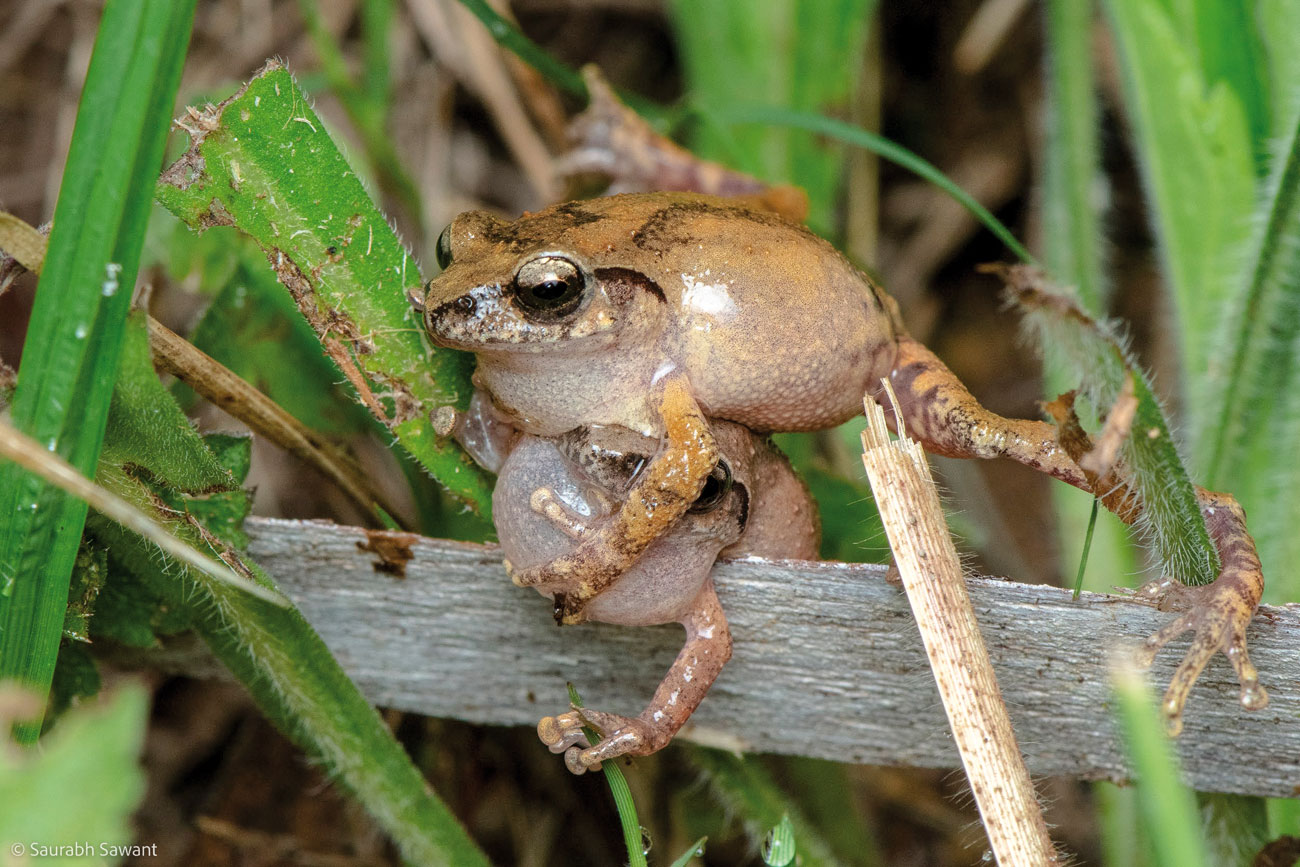
Coonoor bushfrog Raorchestes coonoorensis: Endemic to the Nilgiris, it was first described from Coonoor’s Sim’s Park. With a limited altitude range of 1,780–1,850 m. above sea level, it adds a unique dimension to the region’s biodiversity. During the breeding season, male Coonoor bushfrogs engage in fierce combat for mating rights, a dramatic display of competition akin to wrestling championships.
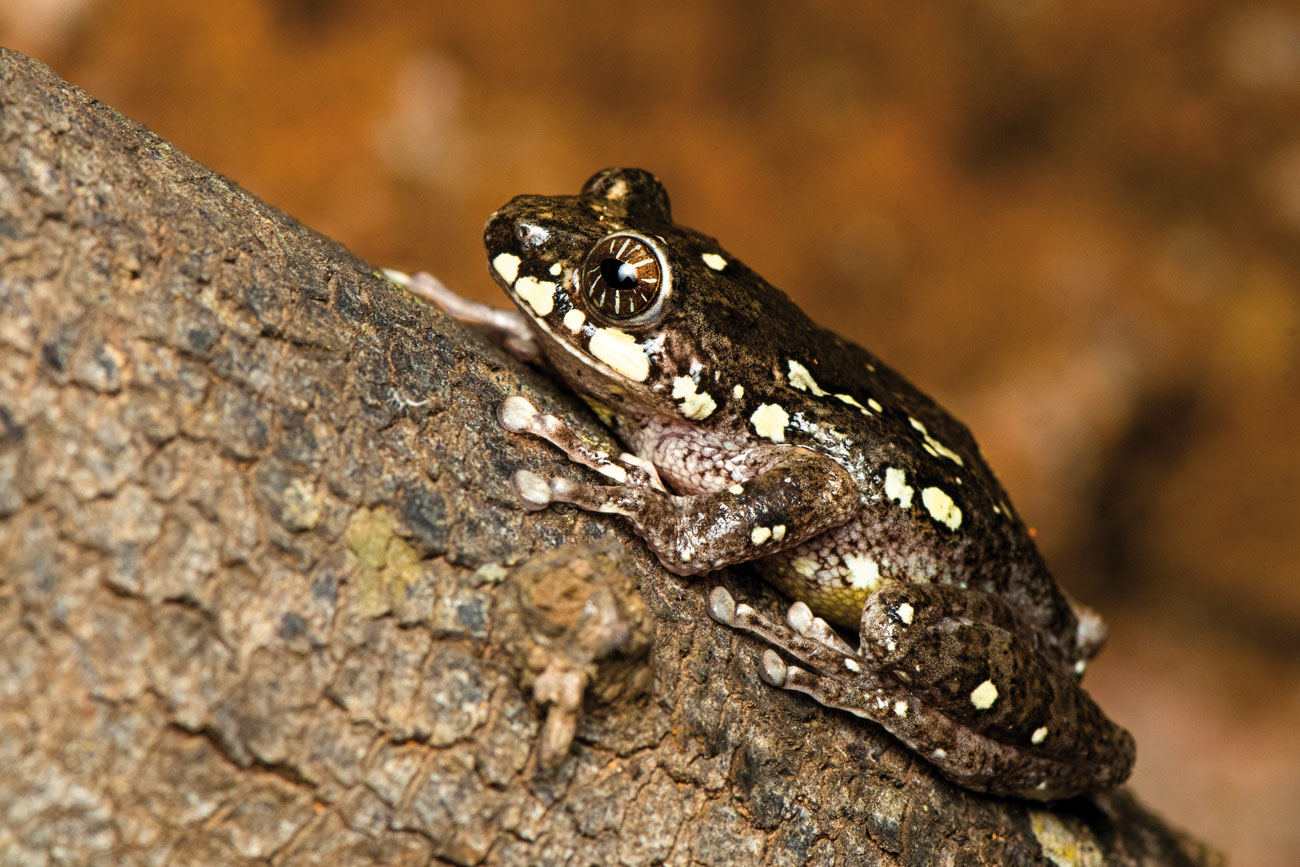
Cross-backed bush frog Raorchestes signatus: This endangered medium-sized frog is endemic to the Western Ghats, India. An arboreal species, it inhabits wet forests and shola areas. It is recognisable by its distinctive ‘X’ marking on a greyish-brown dorsum that gives it its name, and brown eyes with golden stripes. This frog faces habitat loss, necessitating its protection in this biodiverse region.
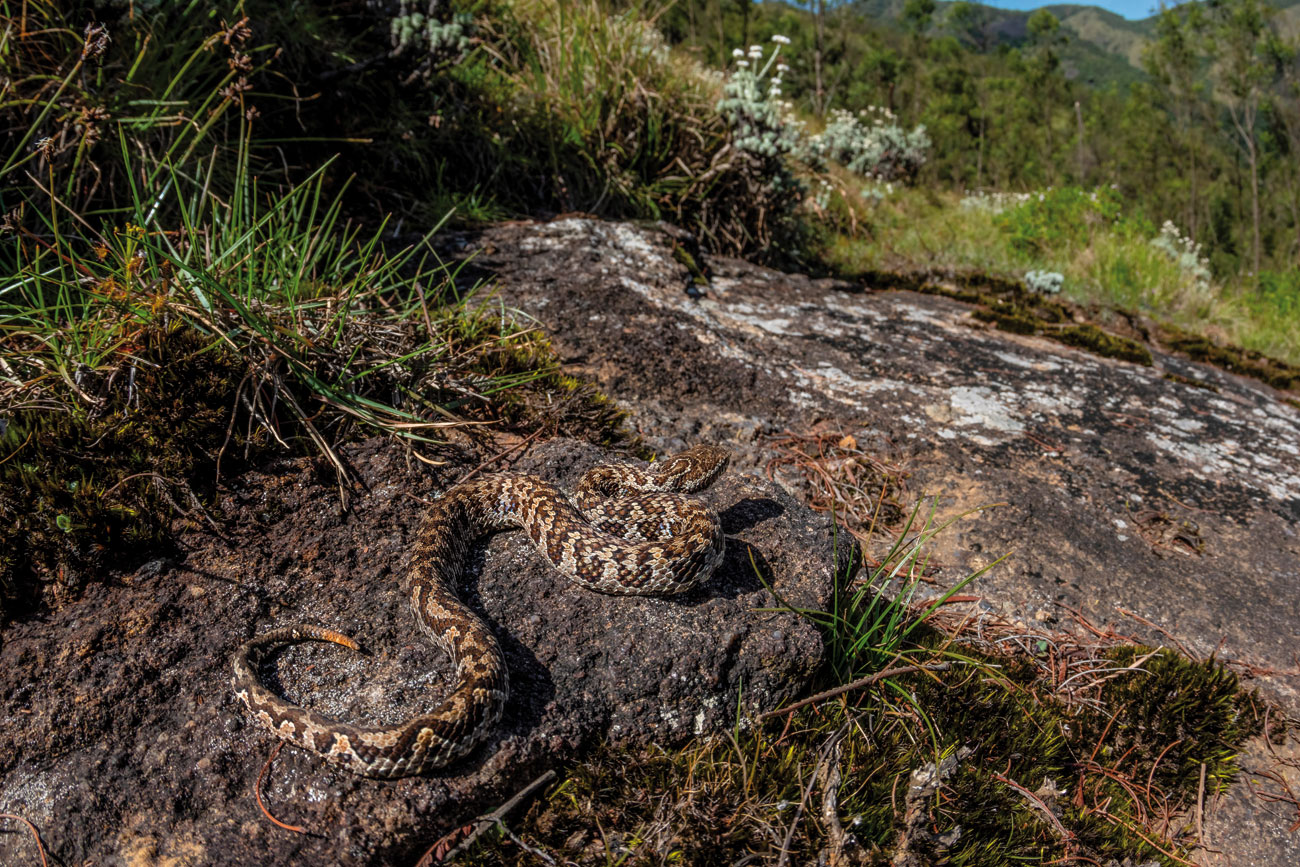
Horseshoe pit viper Craspedocephalus strigatus: This venomous snake, endemic to the Western Ghats of south India, is predominantly found in montane forests, shola patches, and grasslands, occupying altitudes ranging from 1,100 to 2,400 m. It is often sighted on the ground or rock formations and while it is suspected to be diurnal, its natural history remains enigmatic. Its diet consists of frogs, smaller snakes, and rodents such as mice. The intriguing name is inspired by the unique horseshoe-shaped mark or pattern often visible on its head.
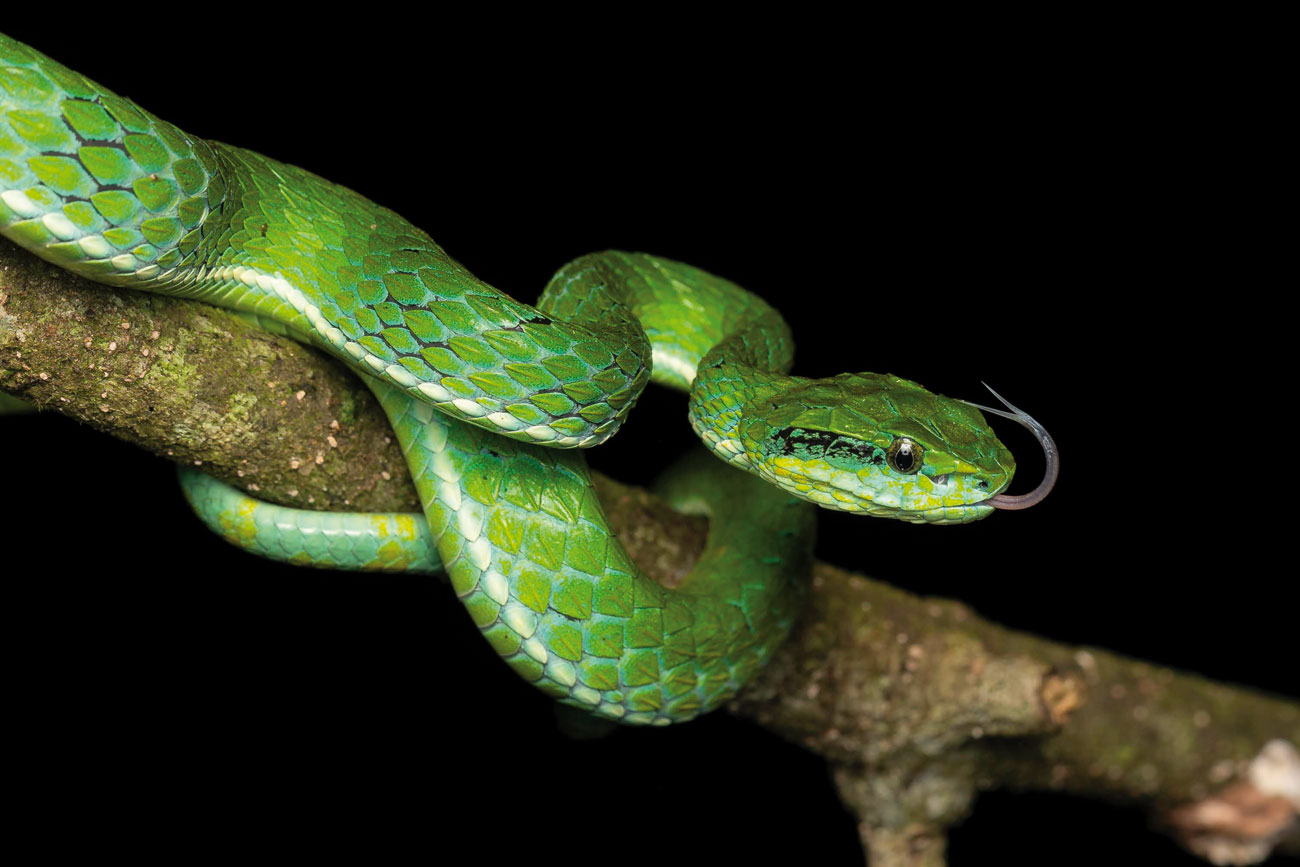
Large-scaled pit viper Craspedocephalus macrolepis: A venomous pit viper endemic to the Western Ghats south of the Palghat gap, it is a high-elevation specialist, commonly found 1,200 m. above sea level. It boasts a distinct bright green dorsum, adorned with patches of blackish skin between scales. Notably, a yellow or white stripe runs along each side of its body, following the first dorsal scale row. This striking snake flicks its forked tongue to navigate surroundings and gather essential chemical cues.
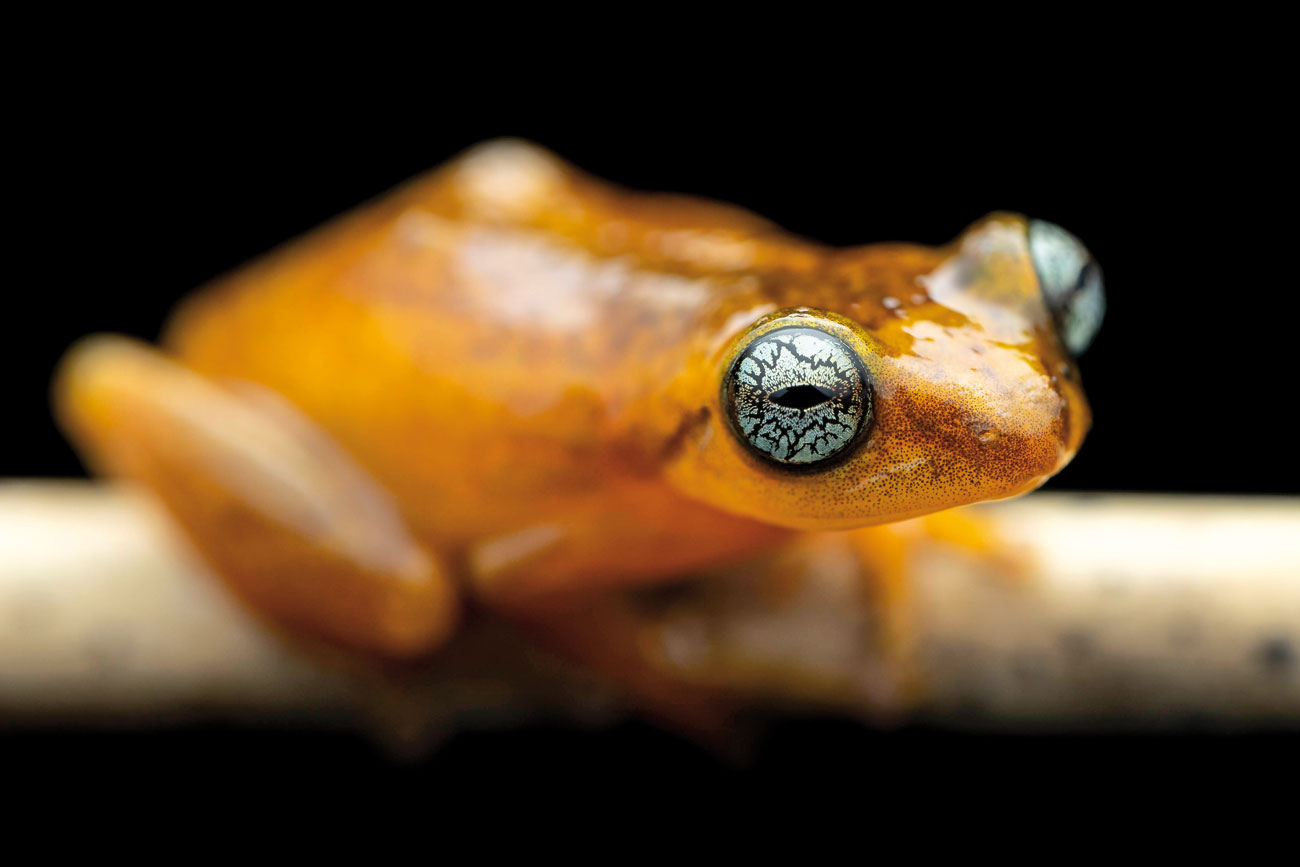
Uthaman’s bush frog Raorchestes uthamani: Within the genus Raorchestes, each species carries its own captivating variations in iris and pupil colouration. The Uthaman’s bush frog, found in the lush landscapes of Munnar in Kerala, is no exception. This frog exhibits a mesmerising array of iris patterns, each an example of the intricate palette of nature.
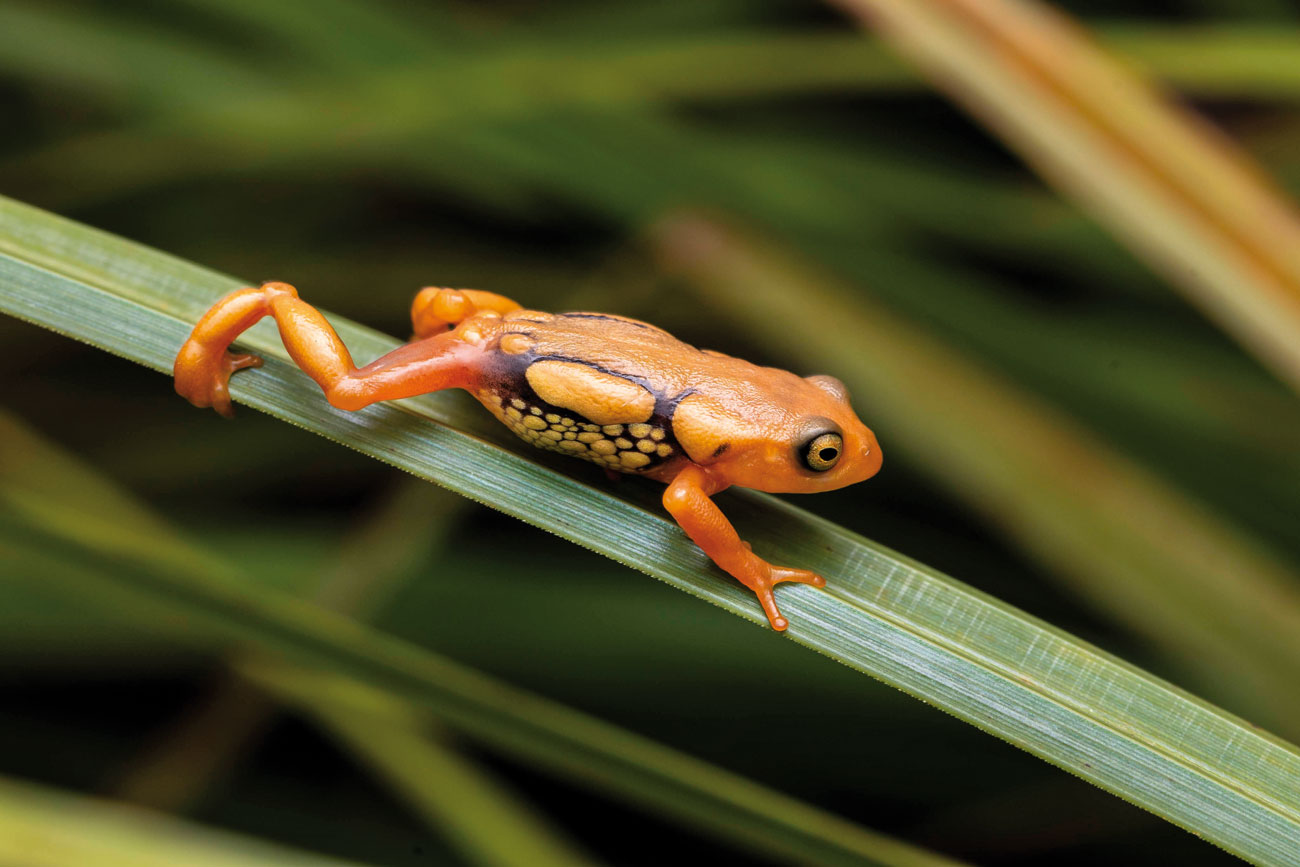
Resplendent shrubfrog Raorchestes resplendens: This critically endangered species, found exclusively in the high-altitude region surrounding the Anamudi peak, is known solely from the Eravikulam National Park. It is distinguishable by its bright reddish-orange colour, multiple prominent glandular swellings, and unusually short limbs, setting it apart from other members of the genus Raorchestes. It exhibits a distinct crawling behaviour and is ground-dwelling, a rarity among its typically arboreal genus. It has specific breeding behaviour and direct development, with froglets being fully mobile upon hatching.
Saurabh Sawant Consultant, Projects and Natural History at the Sanctuary Nature Foundation, he is a wildlife researcher, naturalist, wildlife photographer and filmmaker, and his work has been widely published.














